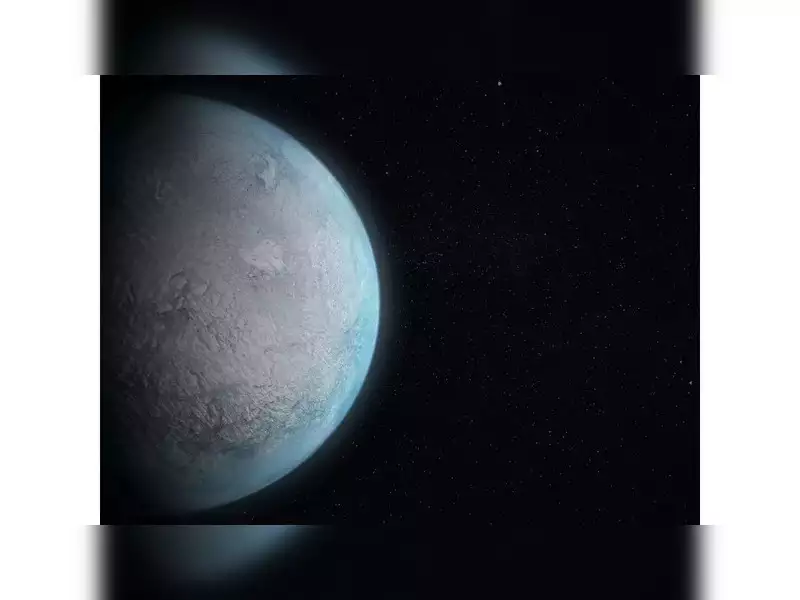Description

Disclaimer: Copyright infringement not intended.
Context
- NASA's James Webb Telescope has made an extraordinary discovery, unveiling a new exoplanet named Wasp-107b.
- Positioned 200 light-years away in the Virgo constellation, this Jupiter-sized exoplanet boasts an intriguing feature - a water cycle resembling Earth's, albeit with a remarkable twist: it experiences sand rain instead of water droplets.
Details
- Size and Location: Wasp-107b, akin to Jupiter in size, orbits a Sun outside our solar system, residing in the Virgo constellation.
- Unique Characteristics: Despite sharing Jupiter's size, Wasp-107b exhibits the mass of Neptune, resulting in a lower density compared to typical gas giants. Its distinct nature, termed "candy floss," allows for in-depth atmospheric analysis.
- James Webb Space Telescope Exploration: Utilizing the Mid Infrared Instrument (MIRI), this telescope delves into Wasp-107b's atmosphere, examining water vapor, sulfur dioxide, and peculiar silicate sand clouds.
- Unveiling Unprecedented Insights: The study represents the first-ever analysis of clouds' composition on exoplanets.

About exoplanets
- Exoplanets, also known as extrasolar planets, are planets located outside our solar system orbiting stars other than the Sun.
- The first confirmed detection of an exoplanet was in 1992, and since then, thousands of exoplanets have been discovered.
Characteristics of Exoplanets:
- Diversity: Exoplanets exhibit diverse characteristics, varying in size, composition, and orbit.
- Types: They can be rocky like Earth, gas giants like Jupiter, or ice giants like Neptune.
- Habitability: Scientists search for exoplanets within the "habitable zone" where conditions might support liquid water, considered essential for life.
Methods of Detection:
- Transit Method: Observing a planet passing in front of its star, causing a slight dimming of the star's light.
- Radial Velocity Method: Detecting a star's slight wobble caused by the gravitational pull of an orbiting planet.
- Direct Imaging: Capturing actual images of exoplanets using advanced telescopes.
- Microlensing and Other Methods: Additional techniques used for detecting exoplanets indirectly through gravitational lensing effects or variations in starlight.
Significant Exoplanet Discoveries:
- Kepler Mission: NASA's Kepler Space Telescope significantly contributed to discovering numerous exoplanets, including Earth-sized planets in the habitable zone.
- TRAPPIST-1 System: The discovery of seven Earth-sized planets orbiting the dwarf star TRAPPIST-1, with some potentially within the habitable zone, raised interest in planetary systems with multiple exoplanets.
- Proxima Centauri b: The closest known exoplanet outside our solar system, orbiting the red dwarf star Proxima Centauri and located within its habitable zone.
Challenges and Future Exploration:
- Atmospheric Composition: Determining the composition of exoplanet atmospheres to assess potential habitability.
- Technological Advancements: Continued advancements in telescopes and space missions aimed at detecting and characterizing exoplanets more accurately.
- Search for Signs of Life: Efforts to detect biosignatures like oxygen, methane, and other molecules indicating the presence of life on exoplanets.

Conclusion
Exoplanet exploration has revolutionized our understanding of planetary systems beyond our own, showcasing the diverse nature of worlds orbiting distant stars.
|
PRACTICE QUESTION
Q. Exoplanets, or extrasolar planets, have gained immense significance in understanding the universe's complexity. Discuss the methods used for detecting and characterizing exoplanets. What implications do these discoveries hold for our understanding of planetary systems and the search for extra-terrestrial life? (250 Words)
|










